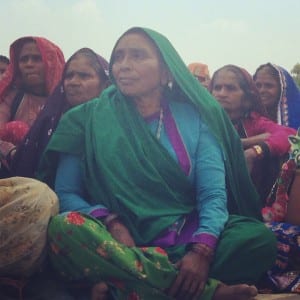By William Eisenman, Director, Foundations and Corporate Partnerships
Last November, I had the great privilege of joining Women’s World Banking’s closest supporters on a trip to India. Our agenda was ambitious: four financial institutions; five cities; eleven days. Throughout the trip, we met the inspiring women entrepreneurs who are at the heart of every product introduction, piece of research, and leadership training led by Women’s World Banking.
The last night of Diwali offered a fitting start to the trip. For many, Diwali centers on Lakshmi—the goddess of wealth and prosperity. Families place diya lights on their windowsills to welcome her into their home, while merchants and shopkeepers begin a new fiscal year with her blessing. Lakshmi is said to bring good luck, protecting her devotees from money-related sorrows.
In a country as colorful and vibrant as India, it came as no surprise that women’s entrepreneurship took many different forms. In a rural, tribal area at the base of Mt. Abu in Rajasthan, two young women were busy converting mustard husks into biofuel. Another woman ran a successful dry cleaning business in the bustling, urban center of Bangalore. And in Ahmedabad, the home of Gandhi’s ashram, a family sold kites made from recycled paper and candy wrappers for supplemental income.

Interestingly, SEWA Bank and Ujjivan have learned a thing or two from the shady money lender—namely, that convenience matters. Both financial institutions have built strong agent networks to compete with the informal sector and reach women where they are. For instance, SEWA Bank has 85 field agents, known as saathis (Gujarati for “helpers”), visit women in the community. Saathis are chosen by community members as someone they trust to handle their financial transactions. Like Lakshmi, saathis are welcomed into the home and have come to represent the good luck—and fortune—that flows from entering the formal banking sector and having greater control over financial assets.
It was a true honor to witness how Women’s World Banking and our financial institution partners in India are changing women’s lives and helping them build a better future for themselves and their communities.




